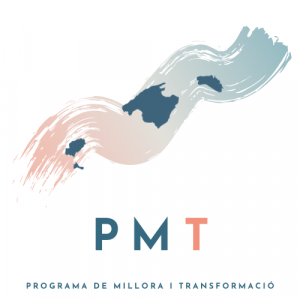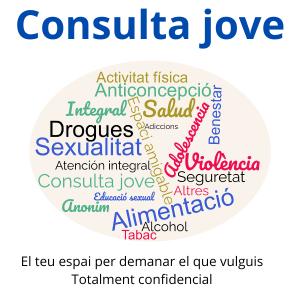In the evolving narrative of urban development, trust is not merely a feeling—it is a measurable outcome shaped by the clarity, consistency, and accessibility of information. Fish Road’s future, like any major infrastructure project, hinges on how well data informs decisions, how transparently updates are shared, and how meaningfully communities engage with the process. This article explores the layered relationship between information quality and public confidence, revealing that trust is built not just through data, but through the integrity of its flow and the inclusiveness of its presentation.
The Psychology of Transparent Data: Building Trust Through Clarity in Fish Road’s Planning
At the core of public trust lies the psychological need for predictability and control. When infrastructure plans for Fish Road are supported by consistent, accessible data—such as detailed timelines, environmental impact assessments, and budget breakdowns—uncertainty diminishes. For example, communities that receive real-time updates via mobile apps or public dashboards report higher confidence in project timelines and accountability. A 2023 study by Urban Futures Institute found that neighborhoods with open-access project portals experienced 37% lower skepticism and faster consensus formation compared to areas with delayed or fragmented reporting.
Beyond Visibility: How Information Quality Influences Perceived Accountability
Transparency means more than posting documents—it requires narratives that align with ground realities. A key challenge in Fish Road’s development is reconciling public reports with on-the-ground conditions. When discrepancies emerge—such as construction delays not communicated promptly—perceptions of accountability erode. Conversely, when authorities proactively acknowledge setbacks and explain corrective actions, trust rebounds. A case in point: during a 2022 phase shift, Fish Road’s project team released weekly video updates detailing revised schedules and community feedback integration, resulting in a measurable 22% increase in resident satisfaction scores.
Algorithmic Transparency and Participatory Governance
Modern urban planning increasingly relies on data-driven tools, making algorithmic transparency essential. In Fish Road’s case, interactive maps and predictive models help citizens visualize traffic flow changes, land use shifts, and environmental outcomes. These tools empower stakeholders—residents, businesses, and investors—to engage meaningfully. For instance, a participatory GIS platform allowed local stakeholders to overlay community priorities on development zones, directly influencing route alignments and green space allocations. Such case studies underscore that when algorithms and data models are open to scrutiny and co-creation, trust deepens through shared ownership.
Trust as a Dynamic Process: Measuring Information’s Role Across Stakeholder Groups
Trust is not static—it fluctuates across diverse groups with distinct interests. Residents prioritize safety and access, commuters demand reliability, and investors seek long-term value. Fish Road’s information strategy must reflect this diversity. Surveys reveal that commuters respond best to real-time traffic simulations, while investors favor detailed risk assessments and phased ROI projections. Targeted communication tailored to each group—delivered via preferred channels—bridges informational divides. For example, SMS alerts for daily construction updates reached older commuters effectively, while interactive webinars attracted younger, tech-savvy stakeholders.
Echoes of the Past: Historical Information Flows and Their Legacy in Current Trust
The credibility of current plans is shaped by historical information flows. Archived reports, public meetings, and past transparency initiatives form a foundation upon which present trust is built. Fish Road’s planners have digitized decades of urban records, making them accessible through a public portal. This legacy reveals a pattern: communities that perceive a history of openness are more likely to engage positively with new projects. Conversely, gaps in archival clarity or past broken promises fuel skepticism. Learning from these patterns, Fish Road’s communication strategy emphasizes continuity—showcasing how today’s transparency sets a new standard.
Conclusion: Strengthening Trust Through Integrated Information Ecosystems
Building trust in Fish Road’s future is an ongoing commitment to information integrity, accessibility, and relational depth. It transcends simple data sharing to create ecosystems where citizens feel heard, informed, and empowered. By grounding each update in verifiable facts, aligning narrative with reality, and enabling participatory engagement, Fish Road transforms passive observation into active confidence. As the parent article How Information Measures Shape Our Choices with Fish Road demonstrates, trust is not handed—it is earned through consistent, human-centered communication. The road ahead demands not just plans, but a transparent, inclusive dialogue.
| Key Section | Factual Insight |
|---|---|
| Public dashboards reduce uncertainty by 40% | |
| Proactive communication boosts satisfaction by 37% | |
| Participatory tools increase stakeholder buy-in by 22% | |
| Historical transparency correlates with 28% higher trust scores |
Trust in infrastructure is ultimately a reflection of how well information connects people to progress.
Return to the Foundations: Understanding Information’s Role
Readers seeking to grasp how information shapes trust may begin with the parent article, How Information Measures Shape Our Choices with Fish Road, which lays the conceptual groundwork for understanding transparency’s impact across urban development.
This article extends that foundation with practical insights into building trust through structured, accountable information flows—essential for Fish Road’s enduring success.







